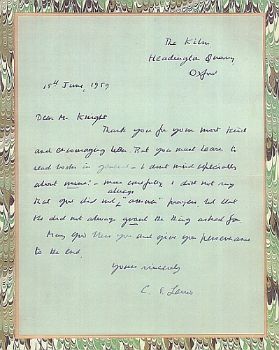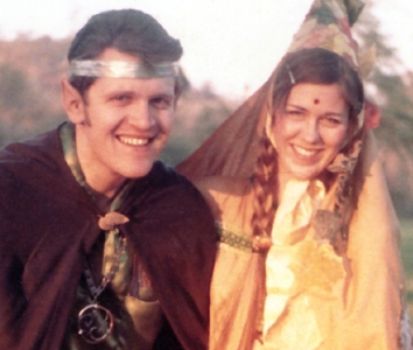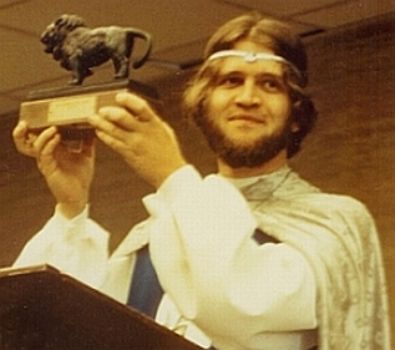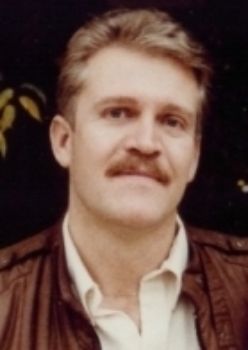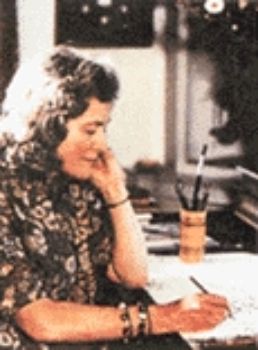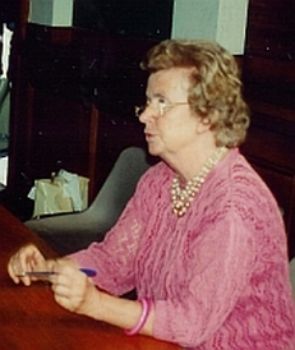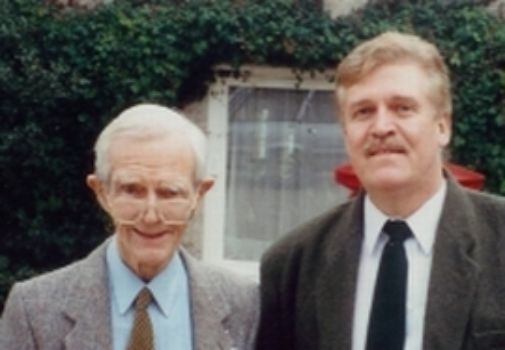GLEN GOODKNIGHT| The Disordered Image
Glen GoodKnight – In His Own Words
 My reading and collecting of C.S. Lewis, J.R.R. Tolkien, and later Charles Williams continued through my college years until 1967. It was that year when my Collection won First Prize in the Student Library Competition at California State University at Los Angeles (even though the collection was less than 3% of what it is now). This, along with the new public interest in Tolkien, moved me to found The Mythopoeic Society in October of the same year. Besides the monthly book discussions, and semi-annual costumed picnics in the Spring and Autumn, I organized a one day Narnia Conference in 1969, and published the subsequent Narnia Conference Proceedings.
My reading and collecting of C.S. Lewis, J.R.R. Tolkien, and later Charles Williams continued through my college years until 1967. It was that year when my Collection won First Prize in the Student Library Competition at California State University at Los Angeles (even though the collection was less than 3% of what it is now). This, along with the new public interest in Tolkien, moved me to found The Mythopoeic Society in October of the same year. Besides the monthly book discussions, and semi-annual costumed picnics in the Spring and Autumn, I organized a one day Narnia Conference in 1969, and published the subsequent Narnia Conference Proceedings.
 The following year, 1970, the first Mythopoeic Conference was organized, and has continued each year to date. The conferences last three to four days, and include papers, panels, art show, banquet, and opening and closing ceremonies. It is difficult to describe all the activities, both scheduled and unscheduled, the Guests of Honor, the mix of people, the discussions formal and informal, the costumes and Pageantry. So much has happened and accomplished at these annual events. A complete list of all the Conferences is available online. The photo here shows myself presenting The Mythopoeic Scholarship Award at the second Conference in 1971.
The following year, 1970, the first Mythopoeic Conference was organized, and has continued each year to date. The conferences last three to four days, and include papers, panels, art show, banquet, and opening and closing ceremonies. It is difficult to describe all the activities, both scheduled and unscheduled, the Guests of Honor, the mix of people, the discussions formal and informal, the costumes and Pageantry. So much has happened and accomplished at these annual events. A complete list of all the Conferences is available online. The photo here shows myself presenting The Mythopoeic Scholarship Award at the second Conference in 1971.
- being a guest at Poulton-Lancelyn, the 900 year old ancestral home of Roger Lancelyn Green (good friend and biographer of Lewis) [3]
- visiting Owen Barfield (life-long friend of Lewis) at his home in Surrey
- meeting with Walter Hooper in Oxford (who was the Secretary to the Lewis Literary Estate)
- meeting Christopher Tolkien (who took on the huge task of being Executor of his father’s Literary Estate) and his charming wife Baillie, shortly before they moved to France
- meeting Humphrey Carpenter as he was doing research for the Tolkien biography at Christopher’s home
- attending The Friends of Lewis party held at Magdalen College, Oxford, July 4, 1975. Present were the Host, Fr. Walter Hooper, Owen Barfield, Nevil Coghill, Colin Hardie, A.C. Harwood, Fr. Gervase Mathew, Clyde Kilby, Fr. John Tolkien, and his sister, Priscilla among a total number of about 25 people
- having a unique and memorable 4th of July, by receiving signatures of Tolkien’s three surviving children on that day in 1975. A copy of the one-volume The Lord of The Rings, printed on India paper, was first signed by Christopher Tolkien earlier that day at his home, and John and Priscilla added their names at the reception
- the fabled and awesome Cambridge and Oxford Universities
- doing research at the Bodleian Library
- visiting the resting places of Tolkien, Lewis and Williams, and seeing many, many other people and places
 The visits to the homes of Pauline Baynes (the premier Narnia illustrator) and Priscilla (Tolkien’s only daughter) were both very pleasant. They were both very gracious, and the fond memories have not faded even after 30 years. During my visit with Priscilla, I was happily surprised to learn she was selling books for charitable purposes at the then equivalent current book stores prices. The books had belonged to her father, who had passed on almost two years earlier. About half of these were first edition translations of Tolkien in various languages. Realizing this was indeed a unique opportunity, I returned the next day with two large empty suitcases, and after much good talk, left later with all I could take away. These books included: Afrikaans, Danish, Dutch, Finnish, French, German, Japanese, Italian, Norwegian, Polish, Spanish and Swedish. Since then, I continued to collect Tolkien, including translations, so that now half of the entire Tolkien collection is comprised of foreign editions. As time when on, I collected more and more of Lewis translations, especially Narnia books, feeling they had a charm and exotic mystery to them, as well as in some cases having totally different artwork. In the days before the internet, collecting was basically checking bookstores in every city I visited, from book dealers’ catalogs, or at auctions held at the Mythopoeic Conferences.
The visits to the homes of Pauline Baynes (the premier Narnia illustrator) and Priscilla (Tolkien’s only daughter) were both very pleasant. They were both very gracious, and the fond memories have not faded even after 30 years. During my visit with Priscilla, I was happily surprised to learn she was selling books for charitable purposes at the then equivalent current book stores prices. The books had belonged to her father, who had passed on almost two years earlier. About half of these were first edition translations of Tolkien in various languages. Realizing this was indeed a unique opportunity, I returned the next day with two large empty suitcases, and after much good talk, left later with all I could take away. These books included: Afrikaans, Danish, Dutch, Finnish, French, German, Japanese, Italian, Norwegian, Polish, Spanish and Swedish. Since then, I continued to collect Tolkien, including translations, so that now half of the entire Tolkien collection is comprised of foreign editions. As time when on, I collected more and more of Lewis translations, especially Narnia books, feeling they had a charm and exotic mystery to them, as well as in some cases having totally different artwork. In the days before the internet, collecting was basically checking bookstores in every city I visited, from book dealers’ catalogs, or at auctions held at the Mythopoeic Conferences.
 In 1992 I returned to England for the J.R.R. Tolkien Centenary Conference held at Keble College, Oxford, and subsequently was the Co-Editor of the Proceedings of the J.R.R. Tolkien Centenary Conference. During the Conferencer I had the opportunity to talk with many fascinating people from many countries around the world. It was during that journey that I had the pleasure of revisiting both Owen Barfield and Pauline Baynes at their residences. I personally presented them each with the Mythopoeic Society’s Life Time Achievement Award (LTAA), to express sincere appreciation for all their life time accomplishments. This 1992 English journey was memorable in countless ways.
In 1992 I returned to England for the J.R.R. Tolkien Centenary Conference held at Keble College, Oxford, and subsequently was the Co-Editor of the Proceedings of the J.R.R. Tolkien Centenary Conference. During the Conferencer I had the opportunity to talk with many fascinating people from many countries around the world. It was during that journey that I had the pleasure of revisiting both Owen Barfield and Pauline Baynes at their residences. I personally presented them each with the Mythopoeic Society’s Life Time Achievement Award (LTAA), to express sincere appreciation for all their life time accomplishments. This 1992 English journey was memorable in countless ways.
— Glen H. GoodKnight
Glen GoodKnight offered a special thanks to the following persons and organizations who helped assemble his website. The Disordered Image, likewise, wishes to show gratitude for their contributions to the Narniad translations area of our site.
| Alonzi, Carla | of HarperCollins Co, UK for her generous help in contacting Narnia publishers in many countries. |
| Baran, Barbara | for her gracious help in providing information and images for various languages. |
| Berke, Susanne | Head of Collection Development &National Bibliographic Centre, National Szechenyi Library, Budapest for detailed bibliographic information on Hungarian translations. |
| Bernhardt, Dora | for information on Hungarian translations. |
| The Braille Bookstore | for their assistance on the Braille texts. |
| Bravo, Romeo | at Adler’s Foreign Books for information about Spanish and Portuguese translations. |
| Bueno, Marta | of Destino/Planeta for her very gracious help and assistance with the Spanish Translations. |
| Chance, Jane | for information about Hungarian translations. |
| Churchill, Rachel | of The CS Lewis Company Ltd. for her gracious and invaluable help |
| Cielava, Ieva | Head of the Centre of Information and Bibliographic References of the National Library of Latvia (Latvijas Nacionālā bibliotēka) for her indispensable help. |
| Cordoso, Manuella | of Editorial Presença for her most appreciated helpfulness on Portuguese translations. |
| Cunningham, Rodger | for information about Schwyzertütsch |
| Deleva, Nadia | for her assistance in the bibliographic information of the Bulgarian books. |
| Eason | at Titan Publishing for information about Chinese Translations. |
| Kim, Jaesung | of Han Books for help on Korean translations. |
| Kimura, Reiko | of Iwanami Shoten Co. for bibliographic help on Japanese. translations. |
| Kocúr, Miroslav | for information about Slovak Narnia books. |
| Kondratiev, Alexei | for his indispensable help in preparing the Russian page. |
| Lauw, Kenneth | of Sun Microsystems, Inc. for his technical consultation and assistance in helping building the Web site. |
| Lloyd Williams, Menna | for information about Welsh Narnia books |
| Mak, Yvonne | of Chinese Christian Literature Council Ltd. for her much appreciated help on the Chinese translations. |
| Markusson, Gudmundur | of Boksala studenta for his invaluable help with Icelandic translations. |
| Nolvak, Tiina | of Kirjastus Logos for help concerning Estonian translations. |
| Ozvatic, Simon | of the publishers Drutvo Mohorjeva Druba for exceptional graciousness amd help concerning the Slovenian translations. |
| Pancikova, Elena | for information concerning Slovak books. |
| Rottensteiner, Franz | for his help related to German translations. |
| Rusu, Nicoleta | of Artimex International for her lively communication regarding Rumanian Translations. |
| Saulena | Manager of Kataliku pasaulio leidiniai, publisher of Lithuanian translations, for bibliographic information. |
| Sigaba, Nondumiso | of Kalahari for help with Afrikaans translations. |
| Sorknes, Anne Kari | for helpful information about Norwegian translations. |
| Smilde, Arend | for help in acquiring Dutch editions, his thorough knowledge of such, and helpful leads, comments and suggestions. |
| Szalóki, Gabriella | Librarian at the National Széchényi Library, Hungary for entry information on Hungarian translations. |
| Rhys, Gethin | or help on Welsh translations. |
| Todorova, Marija | for her invaluable help with the Macedonian translations. |
| Tulumba.com | for their help with Turkish translations. |
| Van den Bovenkamp-Gordeau, Madeleine | for pointing out and helping with correction on the translation work information that she did. It is an honor to have Madeleine providing us the correction on her work. She is the first translator who we have the privilleage to work with. |
| Weinberg, Phillip | for his indespensable help on the Hebrew translations. |
| Wraak, Catharina | of Carlsen Bonnier for information about Swedish translations. |
| Veslec | of Pingvinite for bibliogrphic information on Bulgarian translations. |
| Vitzizzai, Tristana | of Mondadori Children’s Books for her very gracious and helpfulness with the Italian Translations. |
| Zemaitis, Kestutis | for the important information he provided on the Lithuanian page. |


